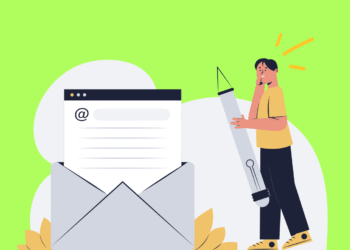Qualifying leads is a critical step in the sales process, helping you focus your efforts on prospects who are most likely to convert into customers.
Email automation is a powerful tool that can streamline and enhance your lead qualification process, allowing you to nurture leads, assess their readiness to buy, and efficiently move them through your sales funnel. Here’s how to use email automation to qualify leads for your small business.
1. Set Clear Lead Qualification Criteria
Before you can effectively qualify leads through email automation, it’s essential to establish clear criteria that define what makes a lead qualified. Lead qualification criteria typically include factors such as demographic information, engagement level, purchase intent, and fit for your product or service.
For example, you might prioritize leads who match your ideal customer profile, have engaged with multiple pieces of content, or have shown a clear interest in a specific product. Defining these criteria upfront will guide the setup of your email automation sequences and ensure that you’re focusing on the right leads.
2. Segment Your Leads for Targeted Communication
Segmentation is crucial for effective lead qualification. By dividing your leads into segments based on their characteristics or behaviors, you can tailor your email content to address their specific needs and move them closer to a buying decision.
Start by segmenting your leads into different groups, such as new leads, engaged leads, and inactive leads. You can also create segments based on industry, job role, or interest in a particular product. Once your segments are in place, set up automated email campaigns that speak directly to each group’s needs and pain points, helping you qualify leads more effectively.
3. Use Lead Scoring to Automate Qualification
Lead scoring is a powerful technique that assigns a numerical value to each lead based on their actions and characteristics. By using email automation to track these actions—such as email opens, link clicks, website visits, and content downloads—you can score leads and determine their level of engagement and interest.
Set up your email marketing platform to automatically update lead scores based on specific behaviors. For example:
- +10 points for opening an email
- +20 points for clicking a link
- +50 points for downloading a whitepaper or attending a webinar
- -10 points for inactivity over a certain period
When a lead reaches a certain score threshold, you can automatically move them to the next stage of your funnel, such as sending them to your sales team for follow-up or triggering more targeted nurturing emails.
4. Automate Lead Nurturing Sequences
Lead nurturing is key to qualifying leads, and email automation allows you to create personalized nurturing sequences that guide leads through your sales funnel. Set up automated workflows that deliver relevant content to leads based on their actions and interests.
For instance, if a lead downloads an e-book on a specific topic, you can enroll them in a nurturing sequence that provides additional resources related to that topic, such as blog posts, case studies, or webinars. As leads engage with your content, you can assess their level of interest and readiness to buy, allowing you to qualify them more accurately.
5. Use Conditional Logic to Refine Your Automation
Conditional logic, or “if/then” statements, can enhance your email automation by dynamically adjusting the content and timing of your emails based on lead behavior. This helps you deliver the right message at the right time, making your qualification process more effective.
For example:
- If a lead clicks on a pricing page link, then send a follow-up email with a case study highlighting the ROI of your product.
- If a lead opens three consecutive emails, then escalate them to a sales-qualified lead and notify your sales team for direct outreach.
- If a lead hasn’t engaged with your emails for a certain period, then send a re-engagement email or adjust their lead score accordingly.
Using conditional logic ensures that your email automation is responsive to lead actions, helping you better qualify leads and move them through your funnel.
6. Track Engagement and Behavior with Analytics
Analytics play a crucial role in lead qualification. By monitoring how leads interact with your emails, you can gain insights into their interests and readiness to purchase. Use your email marketing platform’s analytics tools to track key metrics such as open rates, click-through rates, and conversions.
Set up automated alerts or notifications for key engagement activities, such as when a lead downloads a high-value asset or visits your pricing page multiple times. These signals can indicate a high level of interest, allowing you to qualify the lead more effectively and take timely action.
7. Automate Follow-Up and Hand-Off to Sales
Once a lead has met your qualification criteria, it’s time to transition them to your sales team for further engagement. Use email automation to streamline this hand-off by sending automatic notifications to your sales reps when a lead reaches a certain score or completes a key action.
For example, you can set up your system to send an alert to your sales team when a lead schedules a demo, requests a quote, or reaches a high lead score. This ensures that your sales team can follow up promptly while the lead is highly engaged, increasing the chances of closing the sale.
Additionally, you can automate the sending of a personalized email to the lead from the assigned sales rep, introducing them and outlining the next steps. This approach helps maintain momentum and provides a smooth transition from marketing to sales.
Conclusion
Email automation is a powerful tool for qualifying leads, allowing you to efficiently nurture, assess, and prioritize your prospects. By setting clear qualification criteria, using lead scoring, automating nurturing sequences, and leveraging conditional logic, you can create a streamlined process that moves leads through your sales funnel effectively. Start implementing these strategies today to enhance your lead qualification process and drive more sales for your small business.








